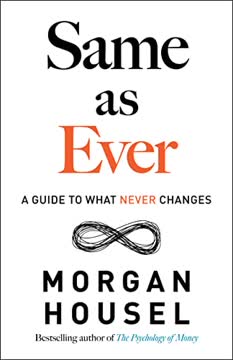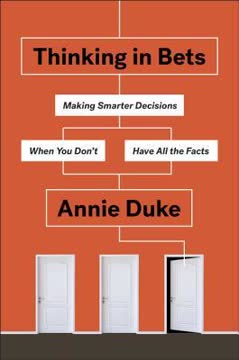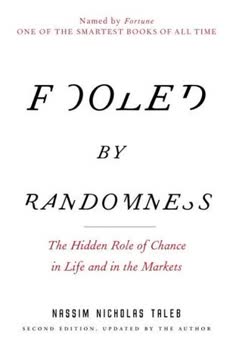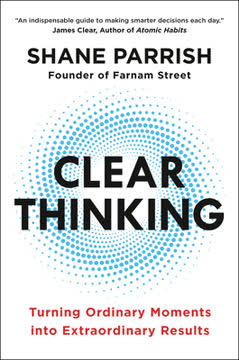Key Takeaways
1. The Map is Not the Territory: Recognize the Limitations of Models
Reality is the ultimate update.
Models simplify reality. Maps and models are essential tools for understanding the world, but they are inherently flawed representations. They reduce complexity to make information manageable, often leaving out crucial details.
Limitations and biases. Every model reflects the values, standards, and limitations of its creator. Maps can influence territories, as seen in Jane Jacobs' critique of city planning models that ignored how cities actually function. To use models effectively, we must:
- Understand their purpose and context
- Recognize their limitations and potential biases
- Regularly update them based on real-world feedback
- Be willing to discard or modify models that no longer serve us well
Practical application. When using any model or framework:
- Question its assumptions and applicability to your specific situation
- Look for areas where the model might oversimplify or distort reality
- Seek multiple perspectives and complementary models to gain a fuller understanding
- Remain open to updating your views as new information becomes available
2. Circle of Competence: Know What You Know and What You Don't
You only think you know, as a matter of fact.
Self-awareness is crucial. Understanding your circle of competence means recognizing areas where you have deep knowledge and experience, as well as those where you lack expertise. This awareness helps you make better decisions and avoid costly mistakes.
Building and maintaining competence. Developing a circle of competence requires:
- Curiosity and a desire to learn
- Continuous monitoring of your performance and decisions
- Seeking honest feedback from others
- Willingness to acknowledge and learn from mistakes
Operating outside your circle. When faced with situations beyond your expertise:
- Learn the basics of the new domain
- Consult experts and ask thoughtful questions
- Apply general mental models to augment your limited understanding
- Be cautious about overconfidence and recognize the limits of your knowledge
3. First Principles Thinking: Break Down Complex Problems to Their Fundamentals
If you know what you understand, you know where you have an edge over others.
Challenging assumptions. First principles thinking involves breaking down complex problems into their most basic elements. This approach allows you to question assumptions and build up solutions from fundamental truths.
Techniques for establishing first principles:
- Socratic questioning: Systematically challenge your thinking and assumptions
- The Five Whys: Repeatedly ask "why" to dig deeper into the root causes of issues
Practical applications:
- Innovation: Elon Musk's approach to electric cars and rockets
- Problem-solving: Identifying core issues rather than treating symptoms
- Decision-making: Basing choices on fundamental truths rather than conventional wisdom
By starting with first principles, you can avoid the trap of incremental thinking and open up new possibilities for creative solutions.
4. Thought Experiments: Use Imagination to Explore Possibilities
Thought experiments can be defined as "devices of the imagination used to investigate the nature of things."
Power of mental simulation. Thought experiments allow us to explore scenarios and ideas that may be impossible, dangerous, or impractical to test in reality. They help us gain insights, challenge assumptions, and generate new hypotheses.
Key applications of thought experiments:
- Imagining physical impossibilities (e.g., Einstein's elevator)
- Re-imagining history (e.g., counterfactual thinking)
- Intuiting the non-intuitive (e.g., Rawls' "veil of ignorance")
Conducting effective thought experiments:
- Clearly define the question or problem
- Establish relevant background knowledge
- Construct a plausible scenario
- Analyze outcomes and draw conclusions
- Compare results to initial hypotheses and adjust accordingly
Thought experiments are powerful tools for expanding our understanding and generating creative solutions, but they must be used with rigor and critical thinking to yield valuable insights.
5. Second-Order Thinking: Consider the Consequences of Consequences
What makes these models so dangerous … is that the constraints that are assumed to be fixed for the purpose of analysis are taken on faith as being fixed in empirical setting.
Looking beyond immediate effects. Second-order thinking involves considering not just the immediate consequences of our actions, but also their subsequent effects. This approach helps us avoid unintended negative outcomes and make more robust decisions.
Key aspects of second-order thinking:
- Recognizing interconnections in complex systems
- Anticipating potential ripple effects
- Balancing short-term gains with long-term consequences
Practical applications:
- Policy-making: Evaluating potential unintended consequences of new laws or regulations
- Business strategy: Considering how competitors might respond to your actions
- Personal decision-making: Weighing the long-term impacts of lifestyle choices
To practice second-order thinking, always ask: "And then what?" This simple question can reveal hidden risks and opportunities that might otherwise be overlooked.
6. Probabilistic Thinking: Estimate Likelihood for Better Decision Making
The theory of probability is the only mathematical tool available to help map the unknown and the uncontrollable.
Navigating uncertainty. Probabilistic thinking involves estimating the likelihood of different outcomes to make better decisions in uncertain situations. It helps us move beyond black-and-white thinking and consider a range of possibilities.
Key concepts in probabilistic thinking:
- Bayesian thinking: Updating beliefs based on new evidence
- Fat-tailed curves: Recognizing the potential for extreme events
- Asymmetries: Understanding that our probability estimates may be biased
Practical applications:
- Risk assessment: Evaluating potential threats and opportunities
- Decision-making: Weighing options based on their likelihood of success
- Forecasting: Making more accurate predictions by considering multiple scenarios
To improve your probabilistic thinking:
- Seek out diverse information sources
- Consider both historical data and current trends
- Regularly update your estimates as new information becomes available
- Be aware of cognitive biases that can skew your judgement
7. Inversion: Approach Problems from Multiple Angles
Inversion is a powerful tool to improve your thinking because it helps you identify and remove obstacles to success.
Flipping the problem. Inversion involves approaching a situation from the opposite end of the natural starting point. This technique can reveal new insights and help avoid pitfalls.
Two main approaches to inversion:
- Assume what you're trying to prove is true, then show what else would have to be true
- Instead of aiming directly for your goal, think about what you want to avoid
Practical applications:
- Problem-solving: Identifying and removing obstacles to success
- Goal-setting: Defining what you want to avoid to clarify what you truly want
- Decision-making: Considering both positive outcomes and potential pitfalls
Examples of successful inversion:
- John Bogle's creation of index funds: Instead of trying to beat the market, focus on minimizing losses
- Firefighters creating controlled burns to prevent wildfires
- Companies conducting "pre-mortems" to identify potential causes of failure before starting a project
8. Occam's Razor: Prefer Simpler Explanations
If all else is equal, that is if two competing models both have equal explanatory power, it's more likely that the simple solution suffices.
Simplicity as a guiding principle. Occam's Razor states that simpler explanations are more likely to be true than complicated ones. This principle helps us avoid unnecessary complexity and make more efficient decisions.
Why simpler explanations are often better:
- Fewer assumptions and variables to be wrong
- Easier to test and falsify
- More robust in the face of uncertainty
Applying Occam's Razor:
- When faced with multiple explanations, start with the simplest one that fits the facts
- Look for ways to reduce complexity in systems and processes
- Be cautious of overly elaborate theories or solutions
Limitations: Remember that some phenomena are inherently complex and cannot be oversimplified. Use Occam's Razor as a guiding principle, not an absolute rule.
9. Hanlon's Razor: Don't Attribute to Malice What Can Be Explained by Stupidity
The explanation most likely to be right is the one that contains the least amount of intent.
Avoiding unnecessary paranoia. Hanlon's Razor reminds us not to attribute to malice that which can be adequately explained by stupidity or incompetence. This principle helps us avoid unnecessary conflict and paranoia in a complex world.
Benefits of applying Hanlon's Razor:
- Reduces stress and negative emotions
- Improves relationships and communication
- Opens up more productive problem-solving approaches
Practical applications:
- Interpersonal conflicts: Consider misunderstandings before assuming ill intent
- Customer service issues: Look for systemic problems rather than blaming individuals
- Workplace challenges: Focus on improving processes rather than assigning blame
While it's important to be aware of potential malicious intent, starting with the assumption of incompetence or mistake often leads to more constructive outcomes and better problem-solving.
Last updated:
FAQ
What's "The Great Mental Models: General Thinking Concepts, Vol. I" about?
- Purpose and Scope: The book, authored by Shane Parrish, aims to help readers develop a better understanding of how the world works by introducing them to mental models that enhance decision-making and problem-solving.
- Content Focus: It covers a range of topics including decision-making, learning, and the art of living, drawing on ideas from both science and the humanities.
- Project Ambition: This volume is part of a larger project to create a multidisciplinary education resource that is accessible to everyone, with plans for additional volumes covering various disciplines.
Why should I read "The Great Mental Models: General Thinking Concepts, Vol. I"?
- Improved Decision-Making: The book provides tools to help you make better decisions by understanding and applying mental models.
- Multidisciplinary Approach: It encourages thinking across different fields, helping you connect ideas and think in a more integrated way.
- Practical Application: The models discussed are not just theoretical; they are meant to be applied in everyday life to improve understanding and outcomes.
What are the key takeaways of "The Great Mental Models: General Thinking Concepts, Vol. I"?
- Mental Models: Understanding and using mental models can significantly improve your thinking and decision-making processes.
- Latticework of Models: Building a network of interconnected models from various disciplines helps in understanding complex problems.
- Continuous Learning: The book emphasizes the importance of updating your knowledge and models as you gain new information and experiences.
What is a mental model according to Shane Parrish?
- Definition: A mental model is a representation of how something works, simplifying complex realities into understandable concepts.
- Utility: They help in decision-making by allowing you to see problems from multiple perspectives and identify relevant information.
- Application: The book focuses on models with broad utility, which can be applied across different areas of life and disciplines.
How does "The Great Mental Models" suggest using first principles thinking?
- Core Idea: First principles thinking involves breaking down complex problems into their fundamental parts and building up from there.
- Technique: It encourages questioning assumptions and focusing on the basic truths of a situation to innovate or solve problems.
- Example: The book uses examples like the discovery of bacteria causing stomach ulcers to illustrate how challenging assumptions can lead to breakthroughs.
What is the "Circle of Competence" concept in the book?
- Definition: Your circle of competence is the area where you have deep knowledge and understanding, allowing you to make informed decisions.
- Importance: Knowing your circle helps you identify where you have an edge and where you need to seek help or learn more.
- Application: The book advises staying within your circle for decision-making and expanding it through continuous learning and feedback.
How does "The Great Mental Models" explain second-order thinking?
- Concept: Second-order thinking involves considering the long-term consequences of actions, not just the immediate effects.
- Importance: It helps in avoiding unintended consequences by thinking through the ripple effects of decisions.
- Application: The book provides historical examples to show how failing to consider second-order effects can lead to disaster.
What is the significance of Occam's Razor in the book?
- Principle: Occam's Razor suggests that the simplest explanation is often the most likely to be correct.
- Application: It helps in decision-making by encouraging you to avoid unnecessary complexity and focus on the most straightforward solutions.
- Examples: The book uses examples from science and everyday life to illustrate how this principle can lead to more efficient problem-solving.
How does "The Great Mental Models" address probabilistic thinking?
- Definition: Probabilistic thinking involves estimating the likelihood of various outcomes to make better decisions.
- Tools: The book discusses tools like Bayesian thinking and fat-tailed curves to help understand and apply probabilities.
- Application: It emphasizes the importance of considering probabilities in complex, uncertain situations to improve decision accuracy.
What role does inversion play in problem-solving according to the book?
- Concept: Inversion involves approaching a problem from the opposite end, such as thinking about what to avoid rather than what to achieve.
- Utility: It helps in identifying obstacles and simplifying complex problems by considering them from different angles.
- Examples: The book provides examples of how inversion has been used in various fields to achieve innovative solutions.
What are some of the best quotes from "The Great Mental Models" and what do they mean?
- "The quality of your thinking depends on the models that are in your head." This emphasizes the importance of having a diverse set of mental models to improve decision-making.
- "Understanding only becomes useful when we adjust our behavior and actions accordingly." This highlights the need to apply knowledge practically to effect positive change.
- "Avoiding stupidity is easier than seeking brilliance." This suggests that focusing on avoiding mistakes can be a more effective strategy than trying to achieve perfection.
How does "The Great Mental Models" suggest dealing with complexity?
- Simplification: The book advises using mental models to break down complex problems into simpler, more manageable parts.
- Interconnected Models: It encourages building a latticework of models to see problems from multiple perspectives and understand their interconnections.
- Continuous Update: It stresses the importance of continuously updating your models and knowledge as you gain new information and experiences.
Review Summary
The Great Mental Models receives mixed reviews. Many praise its introduction to mental models for decision-making and problem-solving, with some considering it essential reading. Readers appreciate the concise explanations and real-world examples. However, critics find the content basic, lacking depth, and poorly organized. Some feel the audiobook narration is subpar. Despite criticisms, many readers value the book's approach to improving thinking and look forward to future volumes in the series. Overall, it's seen as a good starting point for understanding mental models, albeit with room for improvement.
Similar Books










Download PDF
Download EPUB
.epub digital book format is ideal for reading ebooks on phones, tablets, and e-readers.






